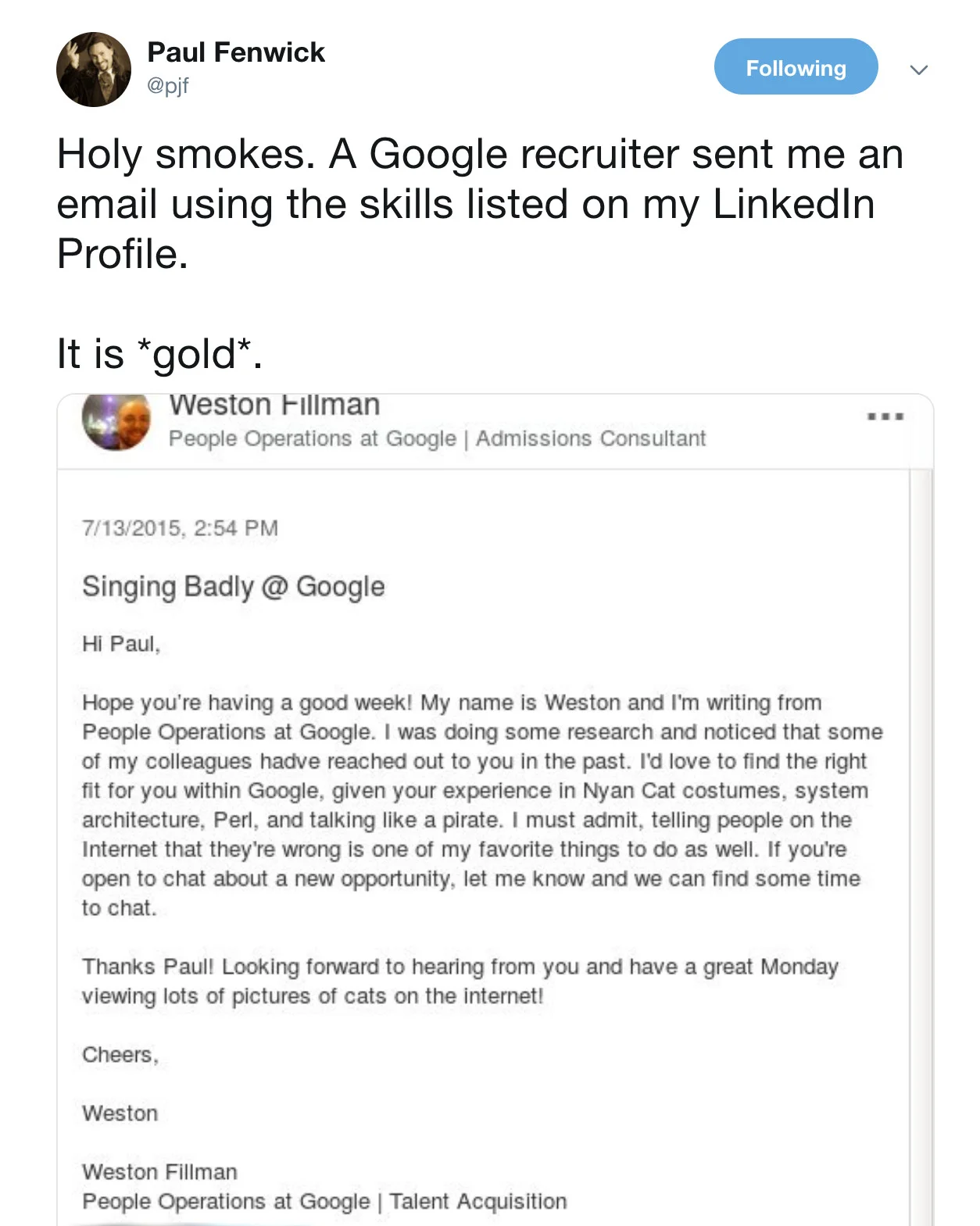Some of my best friends and colleagues are tech recruiters, and a bunch of my favorite humans are on the job hunt. With these fine folks in mind, I decided to help them connect by finding out what kinds of recruiting efforts stand out to potential hires. I reached out to my colleagues and contacts and asked them what they like (and hate) when it comes to recruiting, then I rounded up a list of top tech-recruiting mistakes to avoid and best practices to use instead.
9 common tech recruiting mistakes to avoid
Don’t even think about reaching out to a potential candidate without doing due diligence on their background, experience, and expertise. Not knowing what skills a recruit has and what kind of work they’ve done in the past instantly turns off job seekers. Recruiters who make it clear that they’ve done their homework signal that they aren’t planning to waste a candidate’s time and stand a better chance of piquing their interest from the beginning. Common recruiting mistakes also include:
1. Sending form letters — or even worse, broken form letters.
Unless someone is job-seeking and not getting many offers, chances are your form letter won’t stand out or get much interest. And if your form letter is broken and has [NAME] where a candidate’s name should appear, forget about getting any qualified candidate responses.
2. Blowing the salutation.
Be sure to spell the candidate’s name correctly, and typing “Mr.” or “Miss” in the greeting could be a big mistake. For example, I can’t tell you how many “Mr. Endsley” messages I get every month, and “Miss Endsley” won’t sit well with me, either.
3. Not understanding what the recruit does.
Potential candidates can tell whether you’ve done your homework, dug through their LinkedIn profiles, and have a grasp of their backgrounds, experiences, and areas of interest. Reaching out to a UX designer about an engineering role won’t get you good results.
4. Sending unsolicited contact requests.
Don’t send LinkedIn connection requests to people you don’t know. Just don’t do it.
5. Being too general about the job position.
Kill the coy. Share as many details you can about the role, including any must-have and nice-to-have skills. Draw potential recruits a picture of what the work looks like to make qualified candidates take notice.
6. Being too vague or mysterious about the team and company.
Tech professionals with in-demand skills and experience are being more selective about what kind of team dynamics they walk into and organizational ethics. Letting potential hires know right away what the team looks like (e.g., small vs. large, remote vs. on-site) and which company you represent can save everyone a lot of time.
7. Having unrealistic or overly specific requirements.
Does the right candidate really need to be an expert in every technology and programming language and hold multiple degrees? Be clear about what skills a candidate needs vs. what skills might come in handy or can be acquired on the job.
8. Getting too cutesy or culture-y in a description.
Not all of us consider office puppies, free booze, and ping pong to be job perks. If this is the messaging you lead with, you’re going to attract a pretty specific kind of applicant and quickly narrow down your list of potential candidates.
Also avoid terms like “guys,” “rock star,” and “recent graduate,” which can translate to “women, minorities, and anyone over 25 need not apply.” Ouch.
9. Asking for referrals to other potential candidates.
This is a no-win for recruiters. For example, I’m happy to recommend job seekers in my network for roles, but lots of other folks working in tech see this as lazy recruiting. The safest approach might be to ask a candidate later in the process, after you’ve developed a friendly working relationship and you've both agreed that this role doesn’t quite fit their interests or expertise. Then they might have other contacts in mind for it.
6 best practices for tech recruiters
1. Provide a sincere and personalized greeting.
A personalized greeting goes a long way. Let potential candidates know you understand their previous work experience, you’re familiar with what they do, and that you have an idea of what they want to be doing.

Tweet via @pjf
2. Offer a transparent description of the team and the role.
Be as clear as you can when describing the team and the role. Using words like “rock star” or “fast-paced team” does nothing to help the potential candidate visualize what they’d be walking into. Is this a small team? Remote team?
Being mysterious about the role won’t build intrigue, so opt for transparency.
3. Give the company name.
Telling job candidates that the organization is a startup or a Fortune 500 company also won’t work as well being transparent about the organization from the beginning. How can anyone know whether they’re interested in a role if they don’t know which organization they’d be joining?
4. Be persistent and specific.
In addition to providing the job description and company name, specifying the salary range and why you think the potential candidate is a good fit for the role stands out. Also consider specifying the work authorization and whether the organization provides visa sponsorships, relocation, and additional benefits beyond an hourly or annual salary. If you have a good feeling about a candidate who might not be a 100% technical fit with the job posting, let them know and open those lines of communication.
5. Invite potential candidates to local recruiting events.
The event should provide brief presentations about the company, refreshments, and a networking opportunity. Here’s your chance to show off the culture (i.e., people) part of your organization in person.
6. Maintain a relationship with potential recruits.
If you talk to a candidate who isn’t the right fit for a role, but who would be a great addition to your organization, keep the lines of communication open. If candidates have a good experience with a recruiter, they’ll also be more inclined to join the organization later or send other job seekers their way in the future.
Bonus advice for tech recruits
Keep in mind that recruiters, like you, are just trying to do their jobs. If you're tired of hearing from recruiters and annoyed when they contact you, step back and get a little perspective. Although you might be in the fortunate spot of being happily employed and in-demand, not everyone else is. Grumbling about recruiters on social media is a great way to humble brag, but not the best way to show empathy for the job-seekers or win any friends.
Thank you to the many people who contributed to this article! What would you add to these lists? Let us know in the comments.










4 Comments